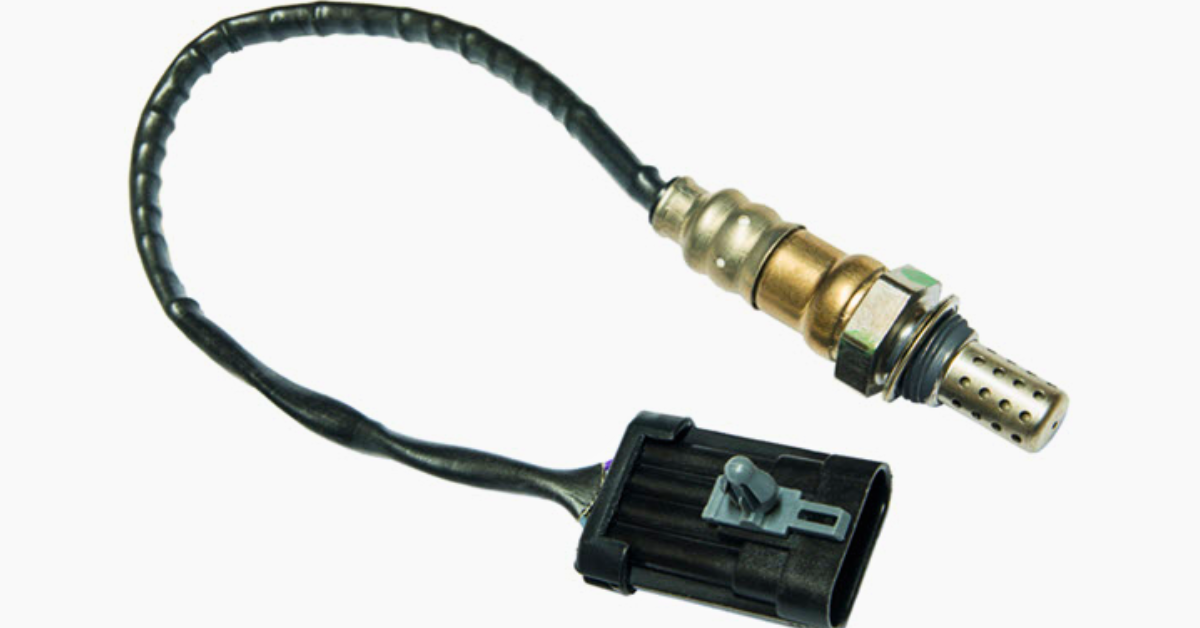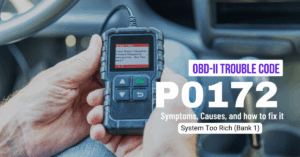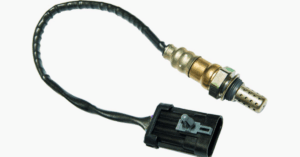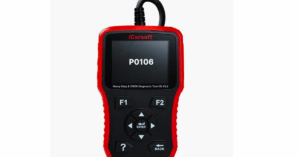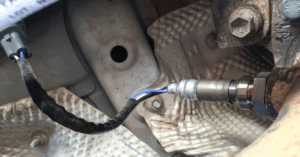If your dashboard lights light up like the Fourth of July, it could signal the P0137 code. This indicates a low-voltage issue in the Oxygen Sensor Circuit, specifically Bank 1, Sensor 2. The sensor monitors oxygen levels in your exhaust, affecting your fuel-to-air ratio and engine performance. An OBD-II scanner can help identify the problem, often related to the downstream oxygen sensor or O₂ sensor.
When the engine control module detects a low voltage level, it triggers this error code. The sensor helps assess the catalytic converter’s efficiency and adjust the engine’s performance. Catching this issue early prevents bigger problems down the road.
Importance of Addressing P0137
Addressing the P0137 code is crucial because a malfunctioning oxygen sensor can significantly affect your fuel efficiency and engine performance. If low-voltage issues are left unaddressed, they can lead to excessive fuel consumption and emissions problems. The engine control module relies on the oxygen sensor to adjust the fuel mixture; without proper regulation, this can result in damage to the catalytic converter.

Taking action early prevents further damage to the engine and the catalytic converter, ensuring optimal engine performance and maintaining fuel efficiency.
What Does the Code P0137 Mean?
The P0137 error code is related to an issue with the oxygen sensor on Bank 1, Sensor 2 of your vehicle’s exhaust system. It signals a low voltage reading from the O₂ sensor, which is designed to monitor the efficiency of the catalytic converter. This sensor plays a vital role in maintaining the optimal air-to-fuel ratio within your engine, adjusting it to ensure efficient combustion and engine performance.
When the powertrain control module (PCM) detects that the voltage from sensor 2 falls below the expected range (around 0.45 volts), it triggers this code. The air-fuel mixture is critical for the stoichiometric ratio, which ideally should be 14.7:1—14.7 parts air to 1 part fuel. The Powertrain Control Module (PCM) and Engine Control Module (ECM) rely on the oxygen sensors to make adjustments to the fuel mixture and ensure the engine runs smoothly.
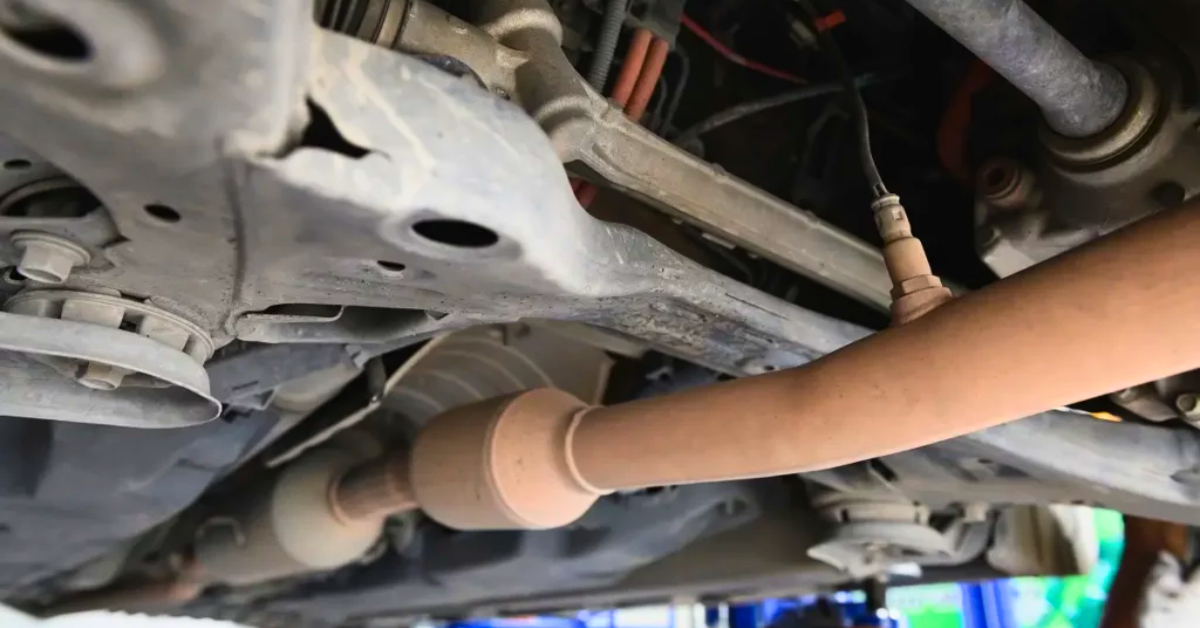
In vehicles, especially those with V6 or V8 engines, Bank 1 refers to the side of the engine with the number 1 cylinder. If the downstream sensor in Bank 1 is reading low, it can result in inefficient combustion, leading to higher emissions of harmful gases, such as carbon monoxide, hydrocarbons, and nitrogen oxides. The catalytic converter helps mitigate these pollutants by converting them into carbon dioxide, water, and nitrogen before they exit the tailpipe.
In some cases, the P0137 code may appear along with other related codes, such as P0420 or P0171, indicating further problems with fuel efficiency or the catalytic converter. Modern vehicles equipped with OBD-II systems featuring advanced oxygen sensors may trigger this code due to a fault in the sensor, its wiring, or exhaust leaks that affect the air-fuel mixture. Understanding the diagnostic trouble code and addressing it promptly is crucial to prevent further damage to the engine or catalytic converter, which could result in costly repairs down the road.
What Can Cause Low Voltage in Sensor 2?
Several issues can cause low voltage in O2 sensor 2, triggering the P0137 code. One common cause is an exhaust leak, which can interfere with the oxygen sensor’s ability to read correctly. A short in the O2 voltage circuit or loose connections in the wiring can also lead to this issue. Additionally, fuel pressure problems, whether too lean or rich, can affect how the oxygen sensor functions and lead to inaccurate readings.
Other potential causes include a faulty O2 sensor, damage to the wiring or sensor, or an exhaust system leak. Leaks can lead to an imbalance in the air-fuel mixture, which may be either too lean or too rich. Problems with the engine coolant temperature sensor or the engine running lean, resulting in excessive oxygen in the exhaust stream, could also affect the sensor’s readings. Finally, a malfunctioning ECM can fail to process the data accurately, resulting in low voltage in sensor two and negatively impacting overall engine performance.
What Are the Symptoms of a P0137 Error Code?
- Check engine light: The most common symptom of a P0137code is the check engine light illuminating on the dashboard, indicating a problem with the oxygen sensor.
- Other dashboard lights: You may see additional warning lights, such as traction control and four-wheel drive, depending on your vehicle’s system
- Rough idle or unstable idle: The vehicle may idle roughly, or the idle could be unstable due to improper air-fuel mixture readings from the faulty O2 sensor.
- Hesitation during acceleration: The engine may hesitate or feel sluggish when you press the accelerator, as the O2 sensor is unable to provide accurate data for the engine control module.
- Exhaust fumes: If there are exhaust leaks, you may notice an odor from exhaust fumes, which could indicate issues with the exhaust system or oxygen sensor.
- Decreased fuel efficiency: A malfunctioning O2 sensor results in incorrect fuel-to-air ratio adjustments, thereby reducing your vehicle’s fuel efficiency.
- Increased exhaust emissions: The imbalance in the air-fuel mixture can cause increased exhaust emissions, which are harmful to the environment and can lead to the vehicle failing emissions testing.
- Rough engine performance: The engine may not run smoothly, with rough idle or unstable engine behavior due to poor sensor readings.
- Power loss: You may experience power loss or hesitation during acceleration as the engine struggles to get the correct air-fuel mixture.
Diagnosing P0137
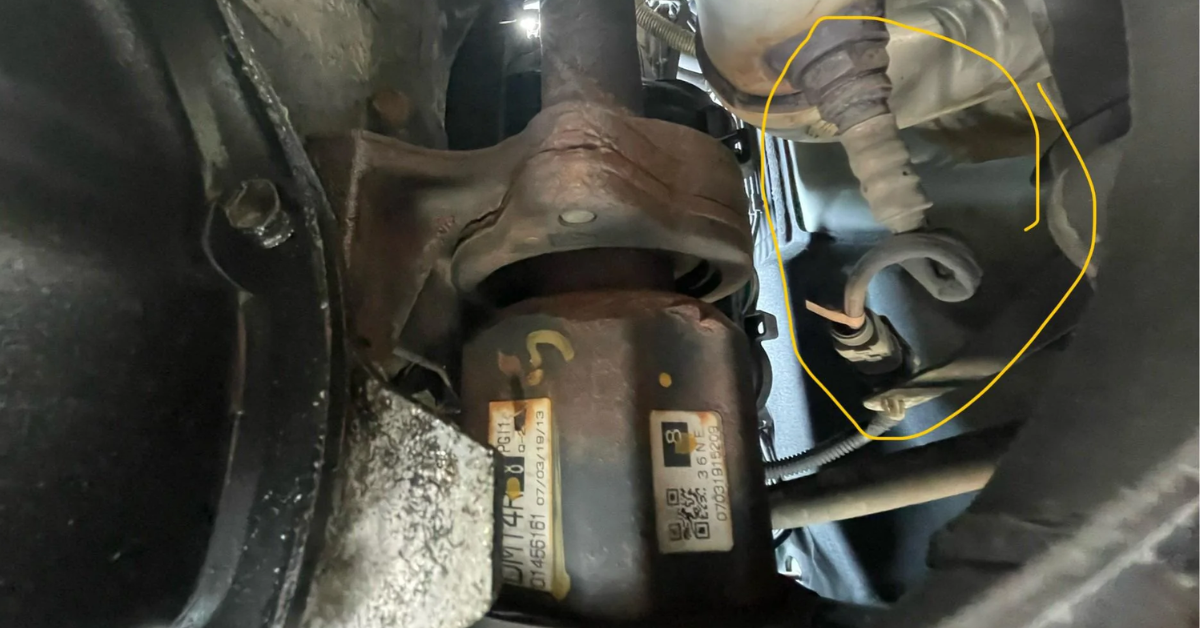
- OBD-II scanner: Use an OBD-II scanner to retrieve the P0137 code and any related codes that may provide additional insight into the issue.
- Inspect oxygen sensor wiring: Check for damaged, corroded, or disconnected wiring around Bank 1 and Sensor 2. Damaged wiring can interfere with the sensor’s readings, leading to an error.
- Use a multimeter: Test the oxygen sensor with a multimeter to measure the voltage output. Compare this reading with the manufacturer’s specifications to ensure it falls within the correct range.
- Examine exhaust system: Inspect the exhaust system for leaks that might lead to inaccurate oxygen readings from the O₂ sensor, which can cause the engine to run inefficiently.
- Monitor live data: Review real-time data from the engine control module (ECM) to confirm if the voltage from the O₂ sensor is within the expected range. If the voltage is outside the expected range, it indicates an issue with the sensor or related components.
How does a technician diagnose code P0137?
A diagnostic scan is the first step, where the technician uses a scan tool to retrieve the P0137 code and any related trouble codes from the vehicle’s computer system. This helps the technician identify if other issues are contributing to the problem. Next, the oxygen sensors and wiring are inspected for damage or disconnections.
The technician may use a multimeter for electrical testing to measure the oxygen sensor’s voltage output and ensure it matches the manufacturer’s specifications. If the issue isn’t found in the wiring or sensor, the technician checks the fuel management system or other components that might be affecting the sensor’s performance. By performing these tests, the technician can pinpoint the cause and recommend appropriate repairs.
How Do I Fix Trouble Code P0137?
To troubleshoot the P0137 code, start by checking the O2 sensor for any visible damage or corrosion in the wiring and connections. Ensure there are no contaminated fluids around the sensor and that it’s functioning correctly. Use an OBD-II scanner to gather real-time data from the oxygen sensors and check for high-voltage or low-voltage low-voltage readings.
If an exhaust leak is detected, repair it. If the O2 sensor is faulty, replacing it may be necessary. For complex issues, take your car or truck to a trusted mechanic for further testing. Fixing the error code promptly ensures you can get back on the road, avoid costlier repairs, and maintain worry-free vehicle performance.
Repairing P0137
To address the P0137 error code, start by inspecting and repairing or replacing any damaged wiring or connectors that may be affecting the O₂ sensor. If the sensor is faulty or has reached the end of its service life, replacing it can resolve the issue. Additionally, check for exhaust leaks and repair leaks in the exhaust system to ensure accurate oxygen readings.
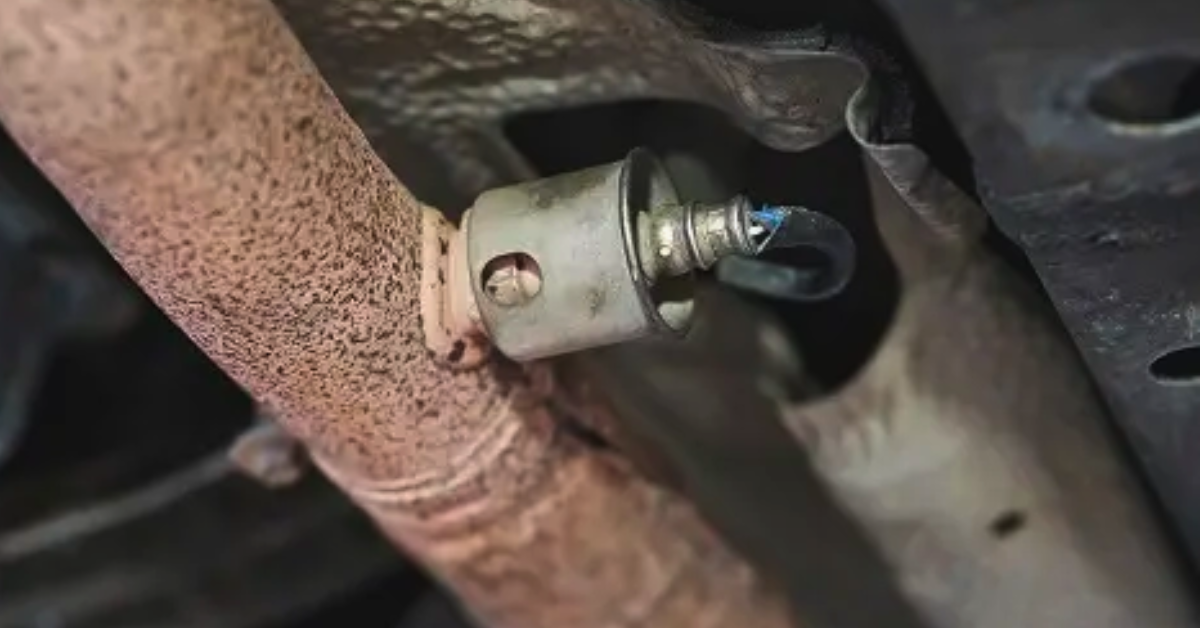
After making the necessary repairs, use the engine control module (ECM) to clear the code and perform a test drive to confirm the issue is resolved. If the code reappears, further investigation may be necessary to ensure that the output from the O₂ sensor is functioning correctly and that no other underlying problems exist.
Is It Safe To Drive With This Error Code?
It may be safe to drive your vehicle for a short period with the P0137 code if you overlook significant drivability issues. However, continuing to drive with the code for an extended period can lead to damage to the engine and catalytic converter due to an uncontrolled air-to-fuel ratio. This can result in poor gas mileage, decreased fuel economy, and higher emissions.
It’s essential to address the issue promptly, as delaying repairs can lead to more costly fixes in the future. If the vehicle begins to experience more severe symptoms, it’s best to stop driving immediately to prevent further damage.
How serious is this code?
The P0137 code is serious because it can lead to significant drivability issues if left unchecked. The ECM relies on the oxygen sensor to monitor the catalytic converter and exhaust system, and if the vehicle is running lean, it can cause internal engine damage. Ignoring this issue could result in costly repairs, potentially costing you thousands of dollars if the problem escalates.
FAQs
- How do I fix error code P0137?
Repair or replace damaged wiring or connectors, replace the O2 sensor if it is faulty, and repair any exhaust leaks. Use an OBD-II scanner to clear the code and perform a test drive to ensure the issue is resolved.
- Is it safe to drive with a P0137 code?
It’s safe for a short period, but driving for an extended period can lead to engine damage, poor gas mileage, and damage to the catalytic converter.
- What causes low voltage on an O2 sensor?
Exhaust leaks, damaged wiring, faulty O2 sensor, low fuel pressure, or a malfunctioning ECM can all cause low voltage in the O2 sensor - Which O2 sensor is bank one sensor 2?
Bank 1 sensor 2 is the downstream O2 sensor located after the catalytic converter on Bank 1, which is the side of the engine containing the number 1 cylinder.

Mian Hashir is a passionate automotive enthusiast and the lead author at Car Garagee, a website dedicated to providing in-depth car reviews, maintenance tips, and the latest news in the automotive world. With years of experience in the industry, Hashir combines his technical knowledge with a love for cars to deliver insightful and engaging content. Whether you’re a car owner or a curious reader, Mian Hashir’s articles help readers make informed decisions, from choosing the right vehicle to understanding how to keep it in top condition.

